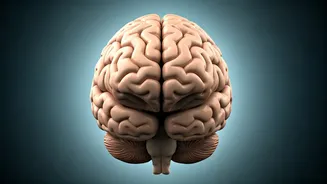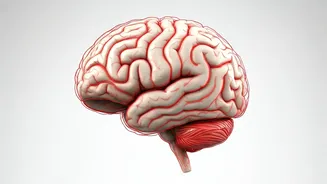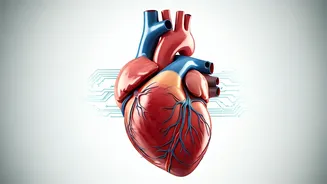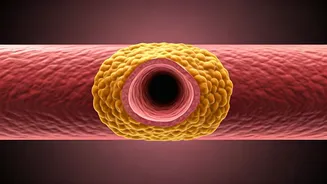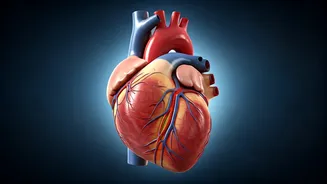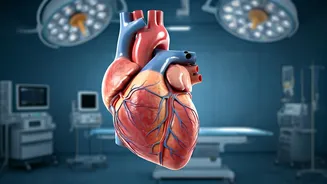What's A Brain Aneurysm?
A brain aneurysm, often described as a bulge or ballooning in a blood vessel within the brain, occurs when the wall of an artery weakens. This weakening
can lead to the formation of an aneurysm, which poses a significant health risk. The most dangerous complication associated with a brain aneurysm is rupture, which leads to a life-threatening condition called a subarachnoid hemorrhage (SAH). SAH is a type of stroke caused by bleeding into the space surrounding the brain. It demands immediate medical intervention. The causes of brain aneurysms are varied and can stem from a combination of factors, including genetics, certain health conditions like high blood pressure, and lifestyle choices. Individuals with a family history of aneurysms are at a higher risk, as are those with specific medical conditions such as polycystic kidney disease and atherosclerosis. Other contributing factors may include smoking, excessive alcohol consumption, and drug abuse. Recognizing the risk factors and seeking early detection through medical checkups is vital.
Stress: A Potential Trigger?
Stress is often cited as a possible contributing factor to the development or worsening of health conditions, and brain aneurysms are no exception. While stress does not directly cause an aneurysm, it can exacerbate existing health conditions that increase the risk. High levels of stress can elevate blood pressure, which puts additional strain on blood vessels and may contribute to their weakening. Chronic stress can also lead to unhealthy lifestyle choices, such as poor diet, lack of exercise, and increased substance use, all of which are known risk factors for cardiovascular diseases, including aneurysms. The link between stress and aneurysms emphasizes the need for effective stress management. Incorporating relaxation techniques, mindfulness practices, and regular physical activity into daily routines can help mitigate the effects of stress on overall health. Furthermore, seeking support from mental health professionals can be beneficial in developing coping strategies and addressing chronic stress triggers.
Work and Health Concerns
The demands of work life and the resultant pressures can potentially influence health outcomes, including the risk of brain aneurysms. Long working hours, high-pressure environments, and excessive workloads contribute to chronic stress and its related health consequences. Prolonged exposure to workplace stress can lead to the development of hypertension, which can weaken blood vessels over time. The strain of these conditions can increase the risk of an aneurysm. Moreover, job-related stressors may trigger unhealthy coping mechanisms, such as increased consumption of alcohol or tobacco. To mitigate these risks, workplace wellness programs that promote mental and physical health are essential. This includes stress management workshops, providing access to mental health resources, and encouraging a healthy work-life balance. Creating a supportive work environment that values employee well-being can help reduce the potential negative health impacts of professional life.
Lifestyle Risk Factors
Several lifestyle choices significantly increase the risk of developing brain aneurysms. Smoking is a well-established risk factor, as it damages blood vessels and increases the likelihood of aneurysm formation and rupture. Excessive alcohol consumption and the use of recreational drugs also contribute to the risk by affecting blood pressure and overall cardiovascular health. A poor diet, lacking in essential nutrients and high in unhealthy fats, can lead to the development of atherosclerosis, a condition where arteries become clogged with plaque. This can weaken arterial walls, making them susceptible to aneurysms. Maintaining a healthy lifestyle is crucial in reducing aneurysm risk. This includes quitting smoking, limiting alcohol consumption, avoiding recreational drugs, and eating a balanced diet rich in fruits, vegetables, and lean proteins. Regular exercise, which helps regulate blood pressure and promote cardiovascular health, is equally vital. Regular health check-ups and open communication with healthcare providers about lifestyle habits are crucial for proactive health management.
Early Detection and Care
Early detection and proper medical care are paramount in managing brain aneurysms and preventing severe complications. Regular health check-ups play a crucial role, especially for individuals with risk factors, such as a family history of aneurysms or existing cardiovascular conditions. Imaging techniques, like CT scans and MRIs, can detect aneurysms before they rupture, allowing for timely intervention. Treatment options depend on various factors, including the size and location of the aneurysm, as well as the patient's overall health. Surgical interventions, such as clipping and coiling, are used to prevent rupture by either blocking blood flow to the aneurysm or strengthening the affected blood vessel. After treatment, regular follow-up appointments and imaging scans are essential to monitor the aneurysm and ensure the success of the intervention. Patients must also adopt lifestyle changes to manage risk factors, such as controlling blood pressure, maintaining a healthy diet, and avoiding smoking, to safeguard long-term health.
